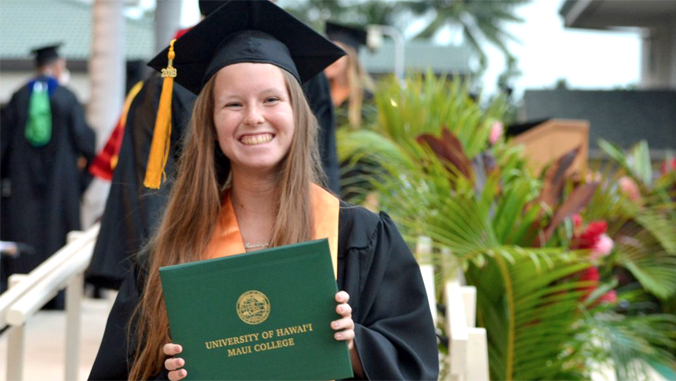
University of Hawaiʻi President David Lassner shared a message on Early College efforts at UH.
One of the very highest priorities for the entire University of Hawaiʻi System is to increase the number of Hawaiʻi students who enroll and earn college credentials as quickly and affordably as possible. A college credential is one of the best paths to economic and social improvement for disadvantaged individuals and their families.
And the evidence for Hawaiʻi is clear: Early College has proven to be a highly effective strategy to get more students into and through college. The impact is especially notable when we look at groups that have traditionally under-enrolled and graduated at lower rates, such as economically-disadvantaged and Native Hawaiian students.
Available to public and charter school students in grades 9–12 across the state, Early College provides students with the opportunity to take college courses at their high school campus and earn dual credit from both high school and college for courses completed. Student participation in dual-credit programs, most notably Early College, has grown exponentially in the last seven years: from five percent of the Class of 2011 to 17 percent of the Class of 2017.
Local data has shown that students who participate in dual-credit programs like Early College are more likely to enroll, persist and graduate from college. Hawaiʻi‘s 2017 public high school graduates who participated in dual credit programs enrolled in college at a higher rate than those who did not—77 percent versus 50 percent. Participating in Early College also empowers students and parents by providing opportunities for advanced coursework for prepared students, and by reducing the eventual cost of college since students enter with some credits under their belt.
Closing the higher education achievement gaps experienced by under-represented groups of students is a priority for UH, and we are always seeking ways to improve educational equity. For high school graduates from the classes of 2013–2017 from low-income families who did not participate in dual credit programs, 19 percent fewer enrolled in college than from non-economically disadvantaged families. For those who did participate in dual credit programs in high school, that gap was closed to nine percent and we believe we can close it further.
While students participate in Early College classes across the state, the program varies from school to school. An Early College student at Molokaʻi High School will get a different experience than one at Waipahu High School. These differences result from the work that high schools and UH campuses have been doing to build Early College programs that best fit the needs of students in each community. Some Early College programs focus on providing foundational college courses like English 100 for students who need to see they can succeed in college. Others focus on college coursework in particular academic pathways connected with the school’s career academies and the future job interests of students.
We are incredibly proud of the 15–20 high-achieving high school students who earned associate degrees by the time of their high school graduation last academic year. But our primary statewide focus is to provide students with experience that proves to students and their families that they can succeed in college, often as the first person in their family to go beyond high school, and that prepares students for success by launching them on their path to a better life.
As with any innovation, we are continuing to refine and improve based on our experiences. We look to evidence rather than anecdotes. We are learning that we need strong academic and career advising for high school students interested in Early College, and we need to ensure that students and families understand the rigorous expectations of college courses. We are also working to strengthen the path from Early College courses offered at high schools into academic pathways for specific college credentials so that we can make every Early College course count. These are some of the ways we are working to increase opportunities to engage students in coursework relevant to their interests while reducing time and money spent on their eventual college degree.
We are incredibly grateful to the philanthropists who helped us get started and still support us, to the Legislature and the governor, who have supported institutionalization of these proven successful programs that reach those in greatest need, and to our remarkable partnership with the Department of Education including statewide and complex administrators as well as principals and schools across the islands.
For all of us committed to building an educated and capable citizenry and workforce for Hawaiʻi, it is crystal clear that Early College is helping increase the educational capital of our state and advance Hawaiʻi toward our state goal of having 55 percent of working-age adults hold a college degree by 2025.
David Lassner
University of Hawaiʻi President

